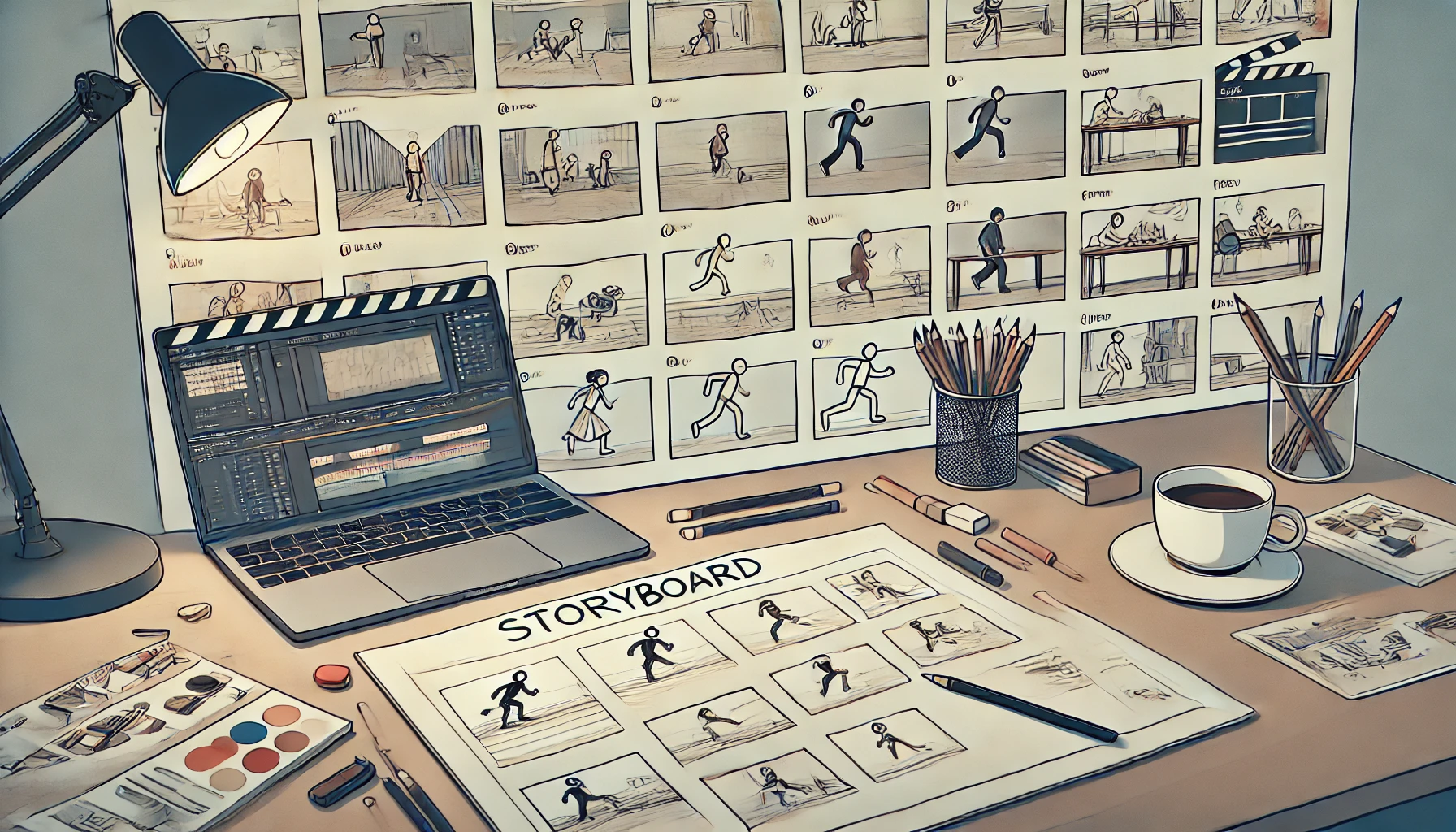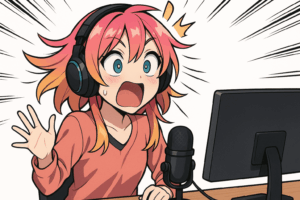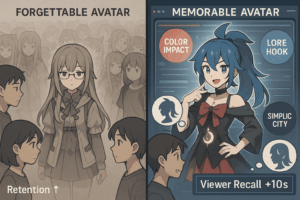Animation storyboards are the foundation of visual storytelling in animation production. They act as a visual representation of the narrative, ensuring that the animation process runs smoothly and aligns with the project’s vision. For storyboard artists, creating an effective animated storyboard for animation, is both an art and a technical task, where they turn scripts into detailed drawings that define the entire animation pipeline.
This guide delves into the critical role of storyboarding in animation production, showcasing its importance, the process, and how to master the craft.
What Are Animation Storyboard?
An animation storyboard is a sequence of panels that visually depict the story, scene by scene. These animation storyboard examples and panels serve as a blueprint, showing key scenes, camera angles, character movements, and other critical elements. Animation storyboards provide the production team with a visual guide, helping everyone stay on the same page. The narrative flow is essential to ensure the animation storyboard progresses smoothly from one scene to the next.
Storyboards are crucial during the pre-production phase, whether for live-action films, animated projects, or commercials. They highlight key moments in the narrative structure and visual form, offering a clear idea of how the final animation will look. By addressing weak points early, an effective storyboard saves time and resources in the animation pipeline.
Why Are Storyboards a Key Part of Animation Production?
Storyboards are a key part of the animation production process because they lay the groundwork for the entire project. They allow storyboard artists and animators to visualise entire scenes before the animation process begins. The storyboard process helps identify weak points, ensuring that the narrative structure is strong and the technical details are well-planned.
Animation storyboards also serve as a communication tool. They bring the production team together, aligning everyone with the project’s vision. From camera movements to character dialogue, every detail is mapped out during the storyboarding stage. This collaborative process ensures that the animation team can focus on creating without misunderstandings.
The Role of Storyboard Artists in the Animation Process
Storyboard artist and artists play a pivotal role in the animation production process. They are responsible for creating storyboard panels that capture the narrative structure, key scenes, and character movements. By combining artistic skills with technical precision, the storyboard artist and artists bring scripts to life. Additionally, they often work closely with concept art to develop the initial visual ideas and designs.
In animation studios, storyboard artists start drawing rough sketches based on the full script. These sketches, also called thumbnail sketches, include basic visuals and action notes. Once these initial drafts are approved pre production, the storyboard artist refines the visuals into detailed drawings, adding key details like camera angles, visual effects, and narrative flow.
The work of storyboard artists doesn’t end there. They collaborate with the animation team, the art director, directors, and the production team to ensure the storyboard aligns with the creative vision of art director. This collaborative process is crucial for creating a final animation that meets both artistic and technical standards.
Types of Storyboards
In the animation process, various types of storyboards are employed, each serving a unique purpose and offering distinct advantages. Here are some of the most common types of storyboards used in animation:
Traditional Storyboard:
This is the classic form of storyboarding, where storyboard artists create hand-drawn or hand-painted panels on paper or board. Traditional storyboards are valued for their tactile quality and the personal touch they bring to the animation process. They are often used to plan and visualize scenes in a detailed and artistic manner.
Digital Storyboard:
With advancements in technology, digital storyboards have become increasingly popular. Created using software like Adobe Animate or Toon Boom Harmony, digital storyboards offer flexibility and ease of editing. They streamline the storyboarding process, allowing for quick adjustments and enhancements, which is particularly useful in fast-paced animation production environments.
Thumbnail Storyboard:
Thumbnail storyboards are small, simplified versions of traditional storyboards. They are used to quickly sketch out the sequence of events in a scene, providing a rough visual outline. This type of storyboard is ideal for brainstorming and initial planning stages, helping storyboard artists to visualize the flow of the narrative without getting bogged down in details.
Animatic Storyboard:
An animatic storyboard, or “animatic,” adds motion and sound to traditional storyboard panels. This animated version helps test the pacing and timing of scenes, offering a more dynamic preview of the final animation. Animatics are crucial for identifying potential issues in the narrative flow and making necessary adjustments before full-scale production begins.
3D Storyboard:
For projects that require a more immersive planning tool, 3D storyboards are created using software like Autodesk Maya or Blender. These three-dimensional visual representations allow for a detailed exploration of scenes, including camera angles and character movements. 3D storyboards are particularly useful for complex animation projects that demand precise spatial planning.
The Storyboarding Process: From Rough Sketches to Animated Storyboards
The storyboarding process begins with a brief description and rough sketches that outline the visual form of the narrative. These sketches are simple but effective, highlighting key events, camera staging, and character movements. They act as the first step in turning visual elements of the narrative arc into visual elements.
Next comes the refinement stage, where storyboard artists create detailed drawings of scenes. This includes adding storyboard panels with action notes, camera angles, and character dialogue. The goal is to ensure that each storyboard panel maintains visual continuity, serving as a visual guide that the animation team can rely on during the animation process.
In some cases, storyboard artists create an animated storyboard. Also called animation storyboard template or a “storyboard animation,” this type of visualisation adds motion to the storyboard panels, providing a clearer idea of how the final animation will look. Animated storyboards are particularly useful for testing narrative flow and visual effects before full production begins.
Essential Elements of an Animation Storyboard
An animation storyboard includes brief description of several essential components that guide the production process:
- Storyboard Panels: These panels depict key scenes, offering a snapshot of the narrative.
- Camera Angles and Movements: They define how scenes are staged and how camera movements are filmed, ensuring smooth transitions.
- Action Notes: These describe character movements, visual effects, scene itself, and other dynamic elements in the scene.
- Character Dialogue: Speech or text that adds context to the visual representation of scenes.
- Visual Representation: A cohesive layout that highlights the story’s flow and critical elements.
These elements ensure that the storyboard process serves as a roadmap for the animation production process. Additionally, dynamic composition plays a crucial role in arranging visual elements to create engaging scenes.
Creating an Effective Storyboard for Animation
Creating an effective storyboard template for animation requires careful planning and attention to detail. Here are the steps involved in animation storyboard template:
- Develop the Full Script: Start with a detailed script that outlines the whole story, including key scenes, character dialogue, and narrative structure.
- Plan Scenes with Thumbnail Sketches: Create rough sketches to visualize the narrative arc and critical elements of plan scenes.
- Use a Storyboard Template: A one storyboard panel template ensures consistency across all storyboard panels and makes it easier to add technical details like action notes and camera angles.
- Draw Scenes in Detail: Refine the rough sketches into detailed drawings, adding key moments like character movements and visual effects.
- Gather Feedback: Share the storyboard with the production team to identify weak points and make necessary adjustments.
This process ensures that the storyboard aligns with the project’s creative vision and technical requirements.
Using Storyboard Software in Animation Projects
Digital tools like modern storyboard software have revolutionised how storyboard artists work. These tools simplify the storyboarding process, offering features like drag-and-drop panels, pre-designed storyboard animation templates, and options to add technical details to storyboard animation like action notes and character dialogue.
Storyboard software also enhances collaboration. Many animators can work on the same storyboard, ensuring that everyone in the production team is on the same page. This level of efficiency is especially valuable in large animation projects, where multiple teams are involved in the production process.
The Collaborative Process: Bringing the Vision to Life
Creative collaboration is inherently a part of storyboarding. It involves the entire production team, from art directors to animators, working together to bring the storyboard shows and narrative to life. This collaboration ensures that the storyboard aligns with the project’s goals and eliminates potential weak points before production begins.
In animation studios, storyboards act as a bulletin board for ideas. Team members contribute suggestions, refine key details, and ensure that every aspect of the storyboard serves the final animation. This collaborative approach own storyboard is essential for creating a cohesive, clear idea and engaging visual representation of the story.
Examples of Storyboarding in Animation Studios
American animation studios like Pixar and Disney have set the gold standard for storyboarding. Their storyboarding process involves creating detailed storyboard panels that showcase the entire narrative arc, from key events to character movements. These storyboards serve as the foundation for their animation pipeline, ensuring a seamless transition from storyboarding stage through pre-production to the final animation. Visual development plays a crucial role in this process, helping many animators to establish the visual elements and styles that define the animation.
One hallmark of effective storyboarding in these studios is the use of dynamic visuals. For example, camera angles and character dialogue are meticulously planned to enhance the storytelling. By studying these animation storyboard examples, aspiring animation storyboard artists can gain valuable insights into the craft.
Storyboarding for Live Action Films vs. Animation
While storyboarding a scene is critical in both live-action films and animation, the focus differs. In live-action film production, storyboards draw scenes and emphasize camera staging, visual effects, and entire scenes’ composition. They help directors and cinematographers visualize how scenes will look before filming begins.
In animation, storyboards focus more on character movements, narrative structure, and scene composition. The storyboard for animation or live action film production must include precise details like action notes and character interactions to guide the animation team through the animation pipeline. Despite these differences, both forms of storyboarding rely on the same principles of careful planning and visual storytelling.
Tips for Aspiring Storyboard Artist
Becoming a skilled storyboard artist requires practice and a solid understanding of the whole story-boarding process. Here are some tips for beginners:
- Start Drawing Simple Scenes: Focus on basic narratives and gradually add more complexity.
- Learn from Animation Storyboard Examples: Study professional storyboards to understand the elements of effective storytelling.
- Experiment with Storyboard Software: Use modern tools to make storyboard shows streamline the creation of storyboard panels and gather feedback.
- Focus on Critical Elements: Highlight key scenes, character movements, and camera angles in your work.
- Collaborate with Others: Share your own storyboard, to refine weak points and ensure it aligns with the project’s goals.
- Utilize Visual Storytelling Techniques: Incorporate methods such as composition, pacing, and visual metaphors to effectively convey your story.
Bring your animation ideas to life with precision and creativity. Partner with 3DAiLY for custom 3D models that elevate your animation projects. From characters to environments, our experts craft assets tailored to your needs. Let’s shape your vision into stunning animations — contact 3DAiLY today!
Conclusion: The Future of Storyboarding in Animation
Storyboarding is a vital part of animation, and its significance will grow with advancing technology. The future promises tools like VR and AR, enabling immersive, interactive storyboards for better scene visualization. AI and ML are set to transform the process, automating tasks and providing predictive insights to refine narratives. These innovations will empower artists to focus on creativity while enhancing precision and collaboration. Despite these changes, the core principles of storyboarding— planning, visual storytelling, and teamwork — will remain essential, ensuring this key animation process evolves while retaining its fundamental role in bringing stories to life.



